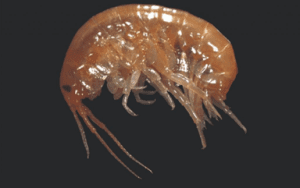TAG: GS 3: ECOLOGY AND ENVIRONMENT
THE CONTEXT: Researchers at Odisha’s Berhampur University have recently identified a new species of marine amphipod, belonging to the genus Parhyale, in Chilika Lake, Asia’s largest brackish water lagoon on India’s east coast.
EXPLANATION:
- The crustacean has been named Parhyale odian after Odisha’s native language, Odia.
- The discovery was made by researchers from Berhampur University, including an assistant professor in the Department of Marine Science, and three others.

- The findings were published in the online edition of the journal Zootaxa on February 14, 2024, in an article titled “A new species of amphipod of the genus Parhyale from Chilika lagoon, India.”
- The newly discovered species is brown in colour and approximately eight millimeters in length.
- It possesses distinctive features, such as 13 pairs of legs, with the first pair utilized for capturing prey and feeding.
- Notably, Parhyale odian is different from the existing 15 species in the genus, particularly due to the stout robust seta on the surface of the male gnathopod’s propodus (first pair of legs).
- After thorough examination and testing in the university laboratory, it was confirmed as a new species.
- The collected specimens have been deposited in the Zoological Survey of India’s Estuarine Biology Regional Centre at Gopalpur-On-Sea, Odisha, for additional research.
Ecological Significance:
- Amphipods, including Parhyale odian, are a crucial group in marine ecosystems, playing a vital role in the marine food chain.
- They serve as indicators for studying the impact of climate change and the health of coastal ecosystems.
- Further research will delve into understanding the specific ecological roles of amphipods in coastal and marine environments.
Previous Discoveries by Researchers:
- The researchers had made other significant discoveries in 2023, including two marine amphipods from Chilika Lake and one from the West Bengal coast.
- The previously discovered species include Quadrivisio chilikensis and Demaorchestia alanensis from Chilika Lake and Talorchestia buensis from the West Bengal coastal area.

